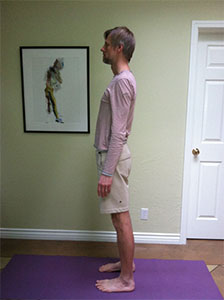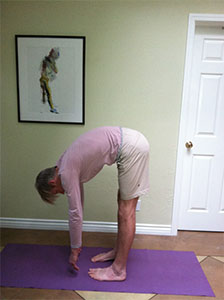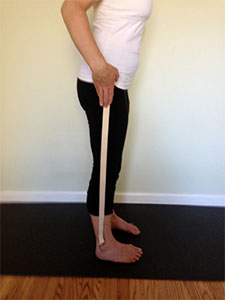As the weather heats up I find that myself and others are experiencing more difficulties with allergies. Symptoms of sinus irritation, itchy eyes, sneezing and congestion that were less a problem when the weather was cooler tend to increase as the temperature rises. It reminds me to do the things I know I need to do to keep a clear head.
Years ago, before I had much interest in alternative health or even health in general for that matter, I was at an event out in an open field east of Sacramento in the summer. I don’t remember why I was there, but I do remember very clearly that I was suffering. My eyes and nose were on fire and I could not stop sneezing. I was miserable.
A gentleman at the event saw the state I was in and told me a story. He said that there was a time when he would have been suffering the way I was, but that he saw an allergy doctor that helped him. This doctor tested him for sensitivities to a variety of substances ranging from environmental irritants to household chemicals to various foods. After the tests the doctor revealed to him those substances to which he was most sensitive and pointed out that one of these was tomatoes. The doctor told him that if he stopped eating tomatoes he would see a significant improvement in his symptoms. The man followed this adivce and his allergies cleared up.
It’s fascinating to me that a relatively minor change in diet could have had such a huge impact on this man’s allergies. I come back to this story periodically and it reminds me that we all have things to which we’re sensitive and many of them, like environmental irritants or pollutants, we really can’t totally avoid. But despite the pervasiveness of many irritants in our environment, what we eat can still has a significant impact on allergies.
We had a rainy winter and plants are still vital and abundant and many of these plants produce pollens that can be irritating to our tissues and solicit reactions from those tissues in the form of allergy symptoms. Staying indoors when our allergy symptoms are at their worst is an option, but not a long term one and not one that avoids exposure altogether.
Most people I talk to who have seasonal allergies use over the counter medications to manage symptoms until these symptoms pass. Examples include steroidal nasal sprays such as Flonase that reduce irritation to the sinuses and anti-histamines such as Claritin and Allegra that prevent our bodies from producing more histamines, the chemicals our cells produce in response to a pathogen.
I am in no way against using these medicines to relieve symptoms and if I’m really suffering I have no problem getting out my stash of Flonase. But I also believe we shouldn’t limit ourselves to merely treating symptoms. It is within our power to limit our exposure to other irritants, such as those in our diet, and by doing so we can reduce our tendency to react to the irritants we can’t avoid.
Ayurveda has helped me see the tremendous value in understanding and addressing root causes of ill health and has exposed me to effective alternatives to symptom treatment. Ayurveda is a terrific source of “home remedies” or using common, easily available household items or methods to treat common ailments. I’ve found that trying out many of these remedies has given me a deeper understanding of how health problems manifest and made me more effective in making recommendations to clients.
Ayurveda views allergies as being a symptom of defective or deficient agni. The word “agni” means “fire,” and it refers to the digestive fire or the ability of a person or of a particular tissue in a person to break down and assimilate or neutralize a substance. If the agni is weak or not working right then a person or tissue will struggle with the metabolic process, resulting in the production of toxins rather than the production of more healthy tissue. If these toxins accumulate they further depress the agni which may eventually trigger an immune response in the form of an allergic reaction.
Thus an essential part of Ayurvedic treatment and prevention of allergies is to improve agni. Our main agni is our digestive agni and one way we can strengthen it is by avoiding foods that are heavy and/or difficult to digest. Foods high in refined sugar are the low hanging fruit for elimination as they greatly tax the agni and have been shown to dramatically depress our immune system. A 1973 study done at Loma Linda University showed that ingesting 100g of sugar, about the amount in 1 liter of soda, reduced the germ fighting capacity of white blood cells by 40%, and this effect lasted for up to 5 hours!
Another way we can strengthen agni is to use an appropriate herbal digestive. A simple one that will work for most people is a tea made from a decoction of cumin, coriander and fennel.
Boil 1 tsp each of cumin, coriander and fennel seeds (whole not powdered) in 3 cups of water down to 2 cups and sip this tea with meals.
“CCF Tea” will help to strengthen weak agni and regulate agni that is over active. Keeping our agni optimal helps us digest and assimilate our food better and prevents us from producing and accumulating the digestive related toxicity that can put a drag on our immune system and increase our allergy symptoms.
Besides taking the above steps to keep our agni strong and our digestion working well I also find neti- a nasal saline rinse – helpful for relieving allergy symptoms. Many people know about nasal saline rinsing as it’s often recommended by docotors for allergies and colds. In the case of allergies, rinsing the sinus passages with salt water helps clear irritants out of the sinus passages, thereby reducing our exposure to these irritants and our tendency to react to them. There are different ways to do a saline rinse, but my favorite and the one I recommend most is using a neti pot.
Depending on the size of the neti pot, dissolve 1/4 to 1/2 tsp of fine sea salt into boiled, body temperature water. Taste the water for saline content. It should have the salinity of your tears. Place the water into the pot and place the spout of the pot into your right nostril. Tilt the head down and to the left over the sink until the water flows into your right nostril and out of your left. Remember to breathe through your mouth.
For larger pots, use half of the water to pour from right to left and the other half to pour from left to right. For smaller pots use a full pot in each direction. When you’ve finished each side, gently blow the excess water out. Be careful not to blow so hard and to push the water deeper into your sinuses.
While Ayurveda recommends neti it goes a step further. This step, done after the rinse and when the saline solution has been gently blown out of the nose, is to apply sesame oil, coconut oil or a combination of the two to the inside of the nose.
Take a small amount of liquified coconut or sesame oil into your palm. Dip your small finger or a cue tip into the oil and apply it to your nostrils. Sniff a few times to pull the oil deeper into the nasal passages. If you have time, lie down for a few minutes with the head comfortably back to allow the oil to drain in more.
Oil will help to counter the dryness caused by weather and/or the effects of blowing the nose frequently. The oil also helps to strengthen the tissue of the nasal passages, making it more resilient and better able to deal with inevitable exposure to irritants. You may find that applying oil will solicit the impulse to blow your nose. Don’t worry if you must as it may require several oil applications to resolve this feeling and to gain relief from the sinus irritation.
Movement can also be extremely helpful in relieving allegy symptoms and clearing the sinus passages. Almost any intelligent movement will help, but a specific movement that seems to work well is to do a series of standing forward bends.
With the feet paralell and about 1 foot apart, bend forward with the knees straight down to a height that does not require a lot of bend from your spine. Use a chair or a yoga block as a support to put your hands on, but avoid leaning into the hands and keep the weight of the body mostly in your heel bones. Hold the forward bend for 5-10 seconds, breathing through your nose as much as possible. Then come up, keeping the knees straight and the weight in the heels until you are fully upright. Stand upright for another 5-10 seconds and then repeat the forward bend. Continue to alternate between the forward bend and standing upright until you start of feel your sinuses clear or you reach your fatigue point, whichever comes first.
Finally, altering our breathing pattern can be very helpful in relieving allergy symptoms. This is especially the case for anyone who tends to breathe through their mouth or must do so because of sinus congestion. When we breathe through our mouth we over oxygenate our blood, throwing off the delicate balance of oxygen and carbon dioxide necessary to make oxygen available to our cells. When our cells don’t get the oxygen they need, even for a short time, they struggle to metabolize well and this makes it difficult for our cells and the tissues they make up to neutralize pathogens. The following breathing exercise can be quite effective.
Sit quietly for a minute or so and allow your breath to be normal and relaxed. Set a timer for 5 minutes. Start to take smaller, sip like inhalations, followed by normal exhalations (meaning don’t attempt to alter your exhalation). Continue this breathing pattern for as long as is reasonably comfortable. If you start to feel short of breath, take a few normal inhalations until your breath recovers, then begin taking smaller inhales again. Continue this process, staying as relaxed as possible for the full 5 minutes.
With many of the over the counter medications available for allergy relief being so effective it’s tempting to rely on these and forgo other solutions. Ayurvedic medicine provides some easy to do and helpful means of symptom relief, as well as a fairly straightforward view of what causes allergies and how to address this cause at its root. The suggestions I’ve given above are a boon to anyone suffering with seasonal allergies and who is interested in relief that goes beyond symptoms. These suggestions may also provide insights into how other aspects of our health may be contributing to our allergies.



